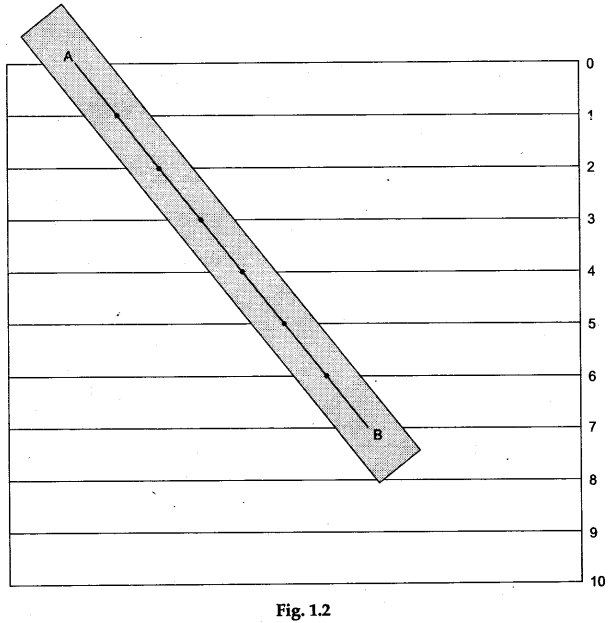Math Lab Activity
– Divide a Line Segment into Number of Equal Parts
Objective
To divide a given line segment (say of length 9 cm) into a given number of equal parts (say into 7 parts)
Materials Required
- A sheet of ruled paper in which all the lines are parallel and equidistant
- A sheet of transparent paper
- A geometry box
Theory
Here we use the Intercept theorem. According to this theorem, if there are three (or more) parallel lines and the intercepts made by them on one transversal are equal, the intercepts on any other transversal are also equal.
Procedure
Step 1: Draw a line segment AB of length 9 cm (the line to be divided into 7 equal parts) on the transparent sheet of paper as shown in Figure 1.1.
Step 2: Mark the lines on the ruled paper as 0,1,2,3,…, sequentially from top to bottom. Place the transparent sheet over the ruled paper in such a way that one end of the line, i.e., point A lies on the line marked 0, and the other end of the line, i.e., point B lies on the line marked 7 as shown in Figure 1.2.
Step 3: Mark the points of intersection of the line segment AB with the parallel lines of the ruled paper.
Observations
The points of intersection of the line segment AB with the parallel lines of the ruled paper divide the line segment AB into 7 equal parts.
Result
The given line segment (of length 9 cm) is divided into 7 equal parts.